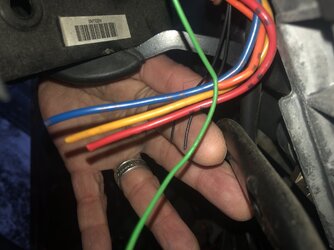All I can tell for sure is it shows this Black/Light Blue wire joining into those from the instrument cluster, A/C function selector assembly, (or EATC assembly for automatic climate control), the multi-function switch, and the compass, then it tells me it's "
G300" (see attached picture below) and to look at diagram "151-37" which provides this picture which suggests that everything mentioned above, connects multiple black/light-blue wires at splice S219 (but not where it is) , and then to (or at?) connector C215, then C215 onward is the final single ground wire for all the above, to the chassis ground point.
I'd check to see if that's corroded but otherwise (I did not read that procedure you mentioned but did look at the diagram) then yes, creating your own ground from the black/light-blue wire seems like something to try next. If running new wire, I'd just take it down to the G300 spot since that's where it's expected to be, in case any future work is done to it... or maybe for the time being any conveniently accessible ground point for testing, then if it works, spend the time to route the wire to the expected G300 ground point.
View attachment 425703







